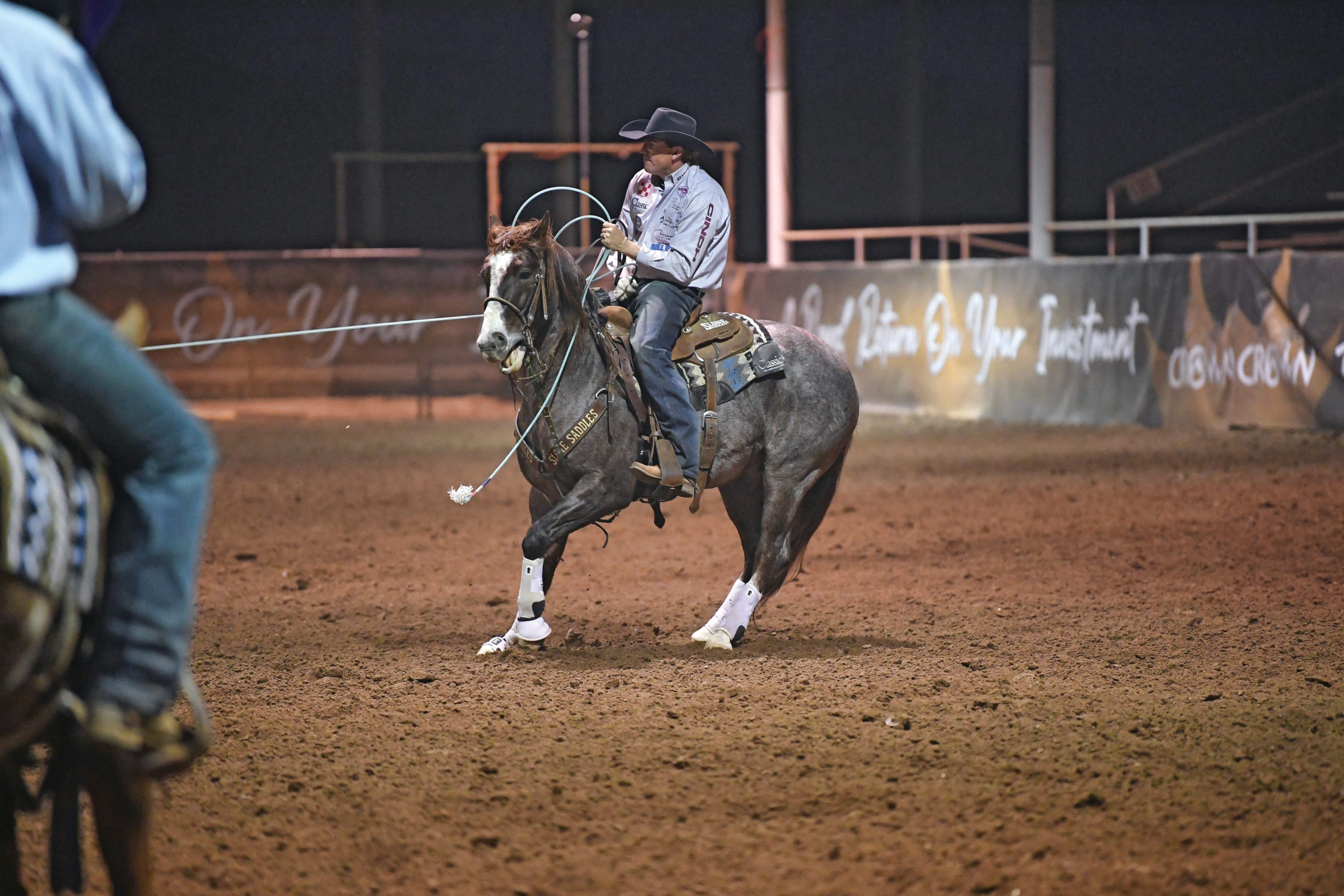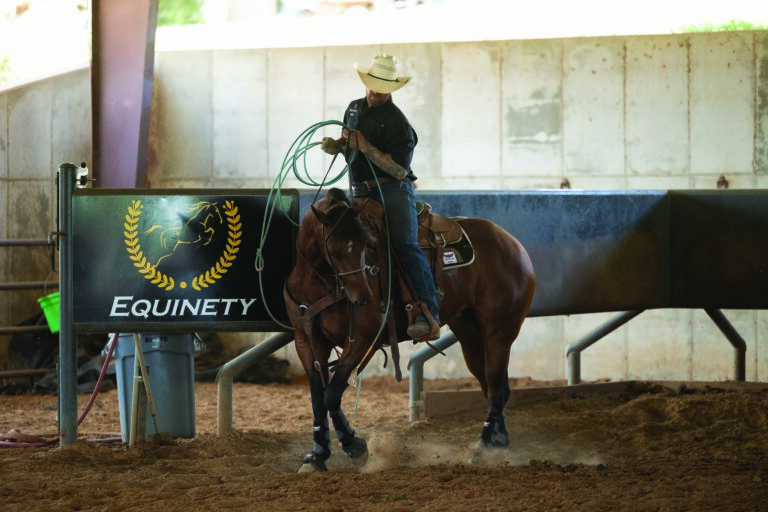A friend of mine, Tallian Thompson, owns this 6-year-old stud, Goin Down For Real, and he wants to be able to ride this horse later on in his career. We were lucky enough to get Corey Cushing to ride him last year, and he was successful in the hackamore. When we were at the Royal Crown in February, he’d probably only had 50 steers heeled on him. So in this series of shots, I’m not trying to ask him for the best he can do in every single run—I want him smooth through his stop and taking the jerk smooth to set him up for the rest of his career, so when I do get further along, I can ask him for a little more. Less is more on a younger horse, and you can make them look further along than what they are by just staying smooth in your riding.
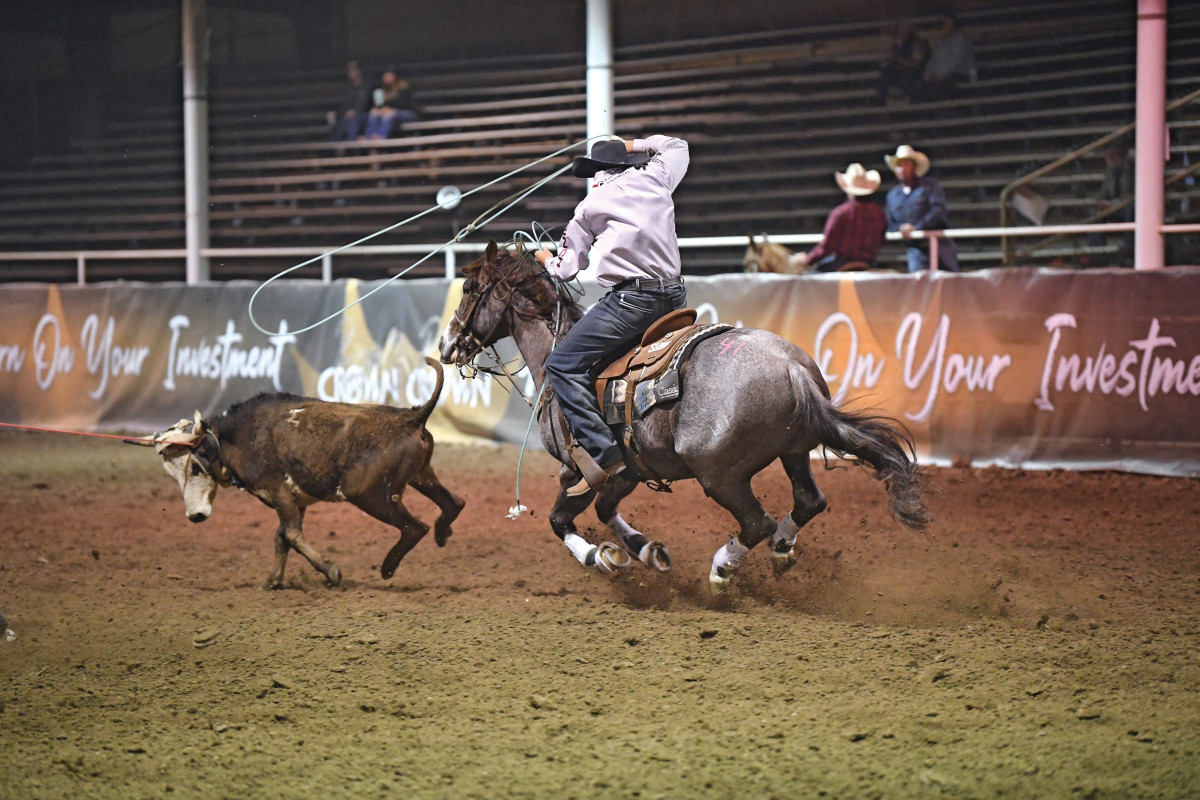
1) I’ve got my left leg in him to keep him round through the turn, keeping his shoulders and rib cage picked up. I helped him just a little bit to the inside—a little earlier than if I were rodeoing. I want him locked in on the left hip all the way through the turn. He’s so trained to stay in that spot from doing the cow horse, because I’m not even touching his face right there.
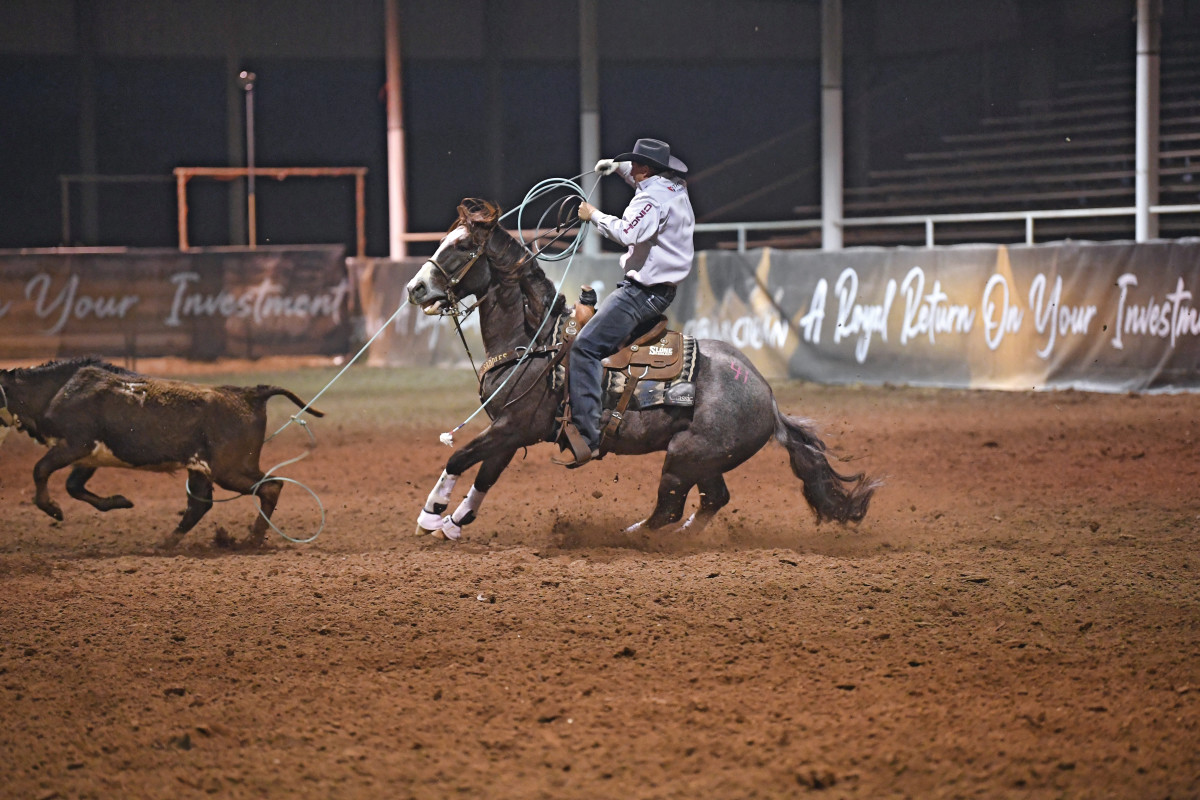
2) His body is in a great spot. He’s not going to stop off my rope just yet, and I probably pulled on him more than I want to in this shot. I like where his shoulders are and where his left hind leg is up underneath him. That’s where the power comes from to get him set up to take the jerk correctly.
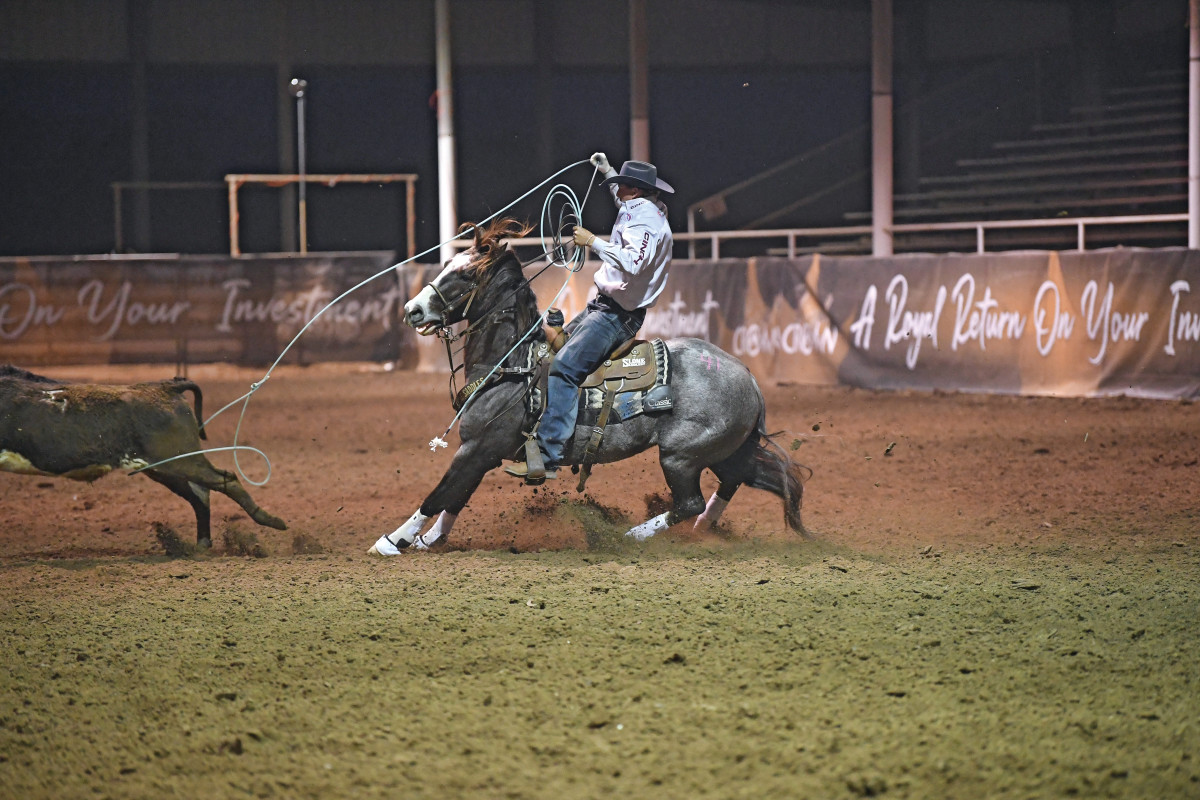
3) He’s in the middle of his stop right now trying to get completely stopped. I’m trying to stay quiet on him, because he’s really good-minded but on the green side. I’m trying to just let things happen rather than force something to happen. I don’t want him to have a huge, big stop as much as I want him to stay in the same spot and take the jerk. The big stop will come with these fundamentals.
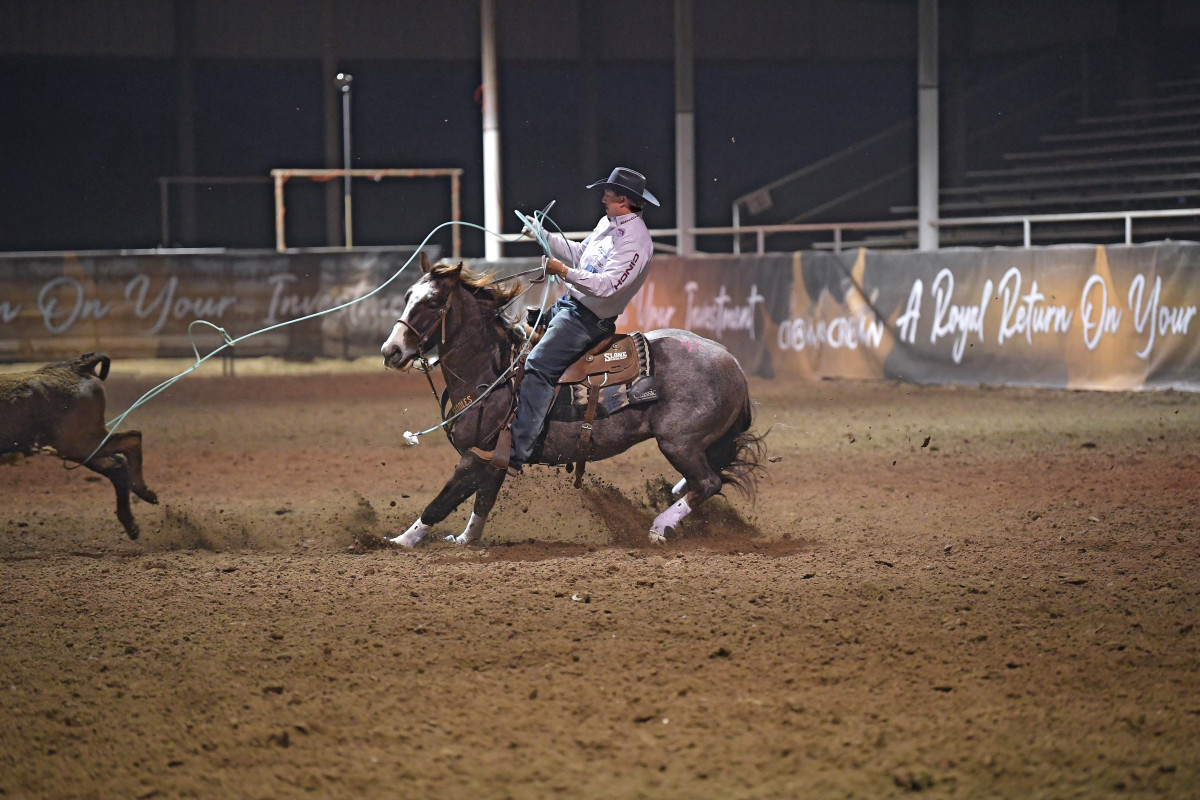
4) He’s back down in this picture more than I’d want him to be. I’d like for him to be more elevated on the front end, but he keeps moving his front feet, which allows him to never take your throw away. That’s his natural feel and I don’t know if I’ll get it out of him. I try to sit back in the saddle after I throw anyway, to where it looks better if I’m sitting down, allowing me to find the horn in the same spot. I am just trying to get to the back of the saddle and let it happen.
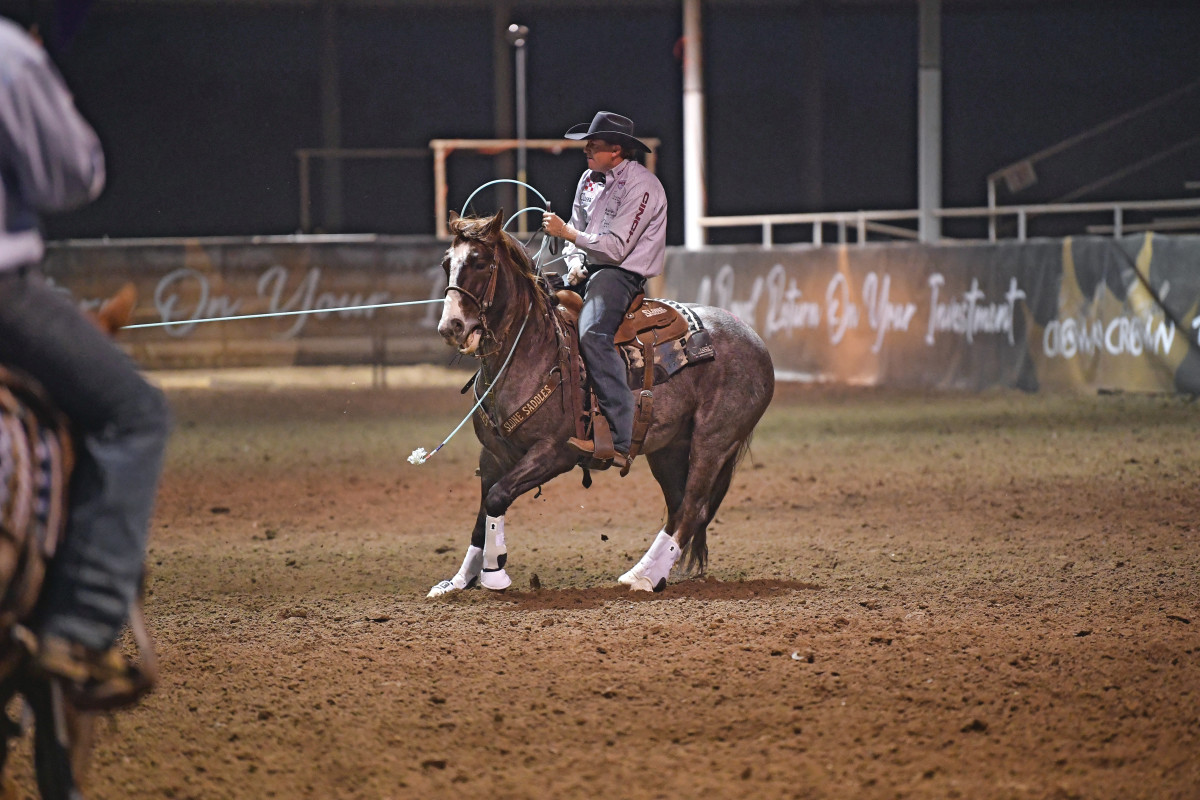
5) The goal is for their feet not to move after the dally, so I maintain tension on the reins. With this horse being a hair greener, I pulled on him more to make him stay in his stop. On a seasoned show horse, I try not to touch them at all. I don’t want them backing up or moving forward. Teaching them to back up teaches them to peg their front feet through their stop, which can—in the long run—create soundness issues and take your throw away. TRJ




